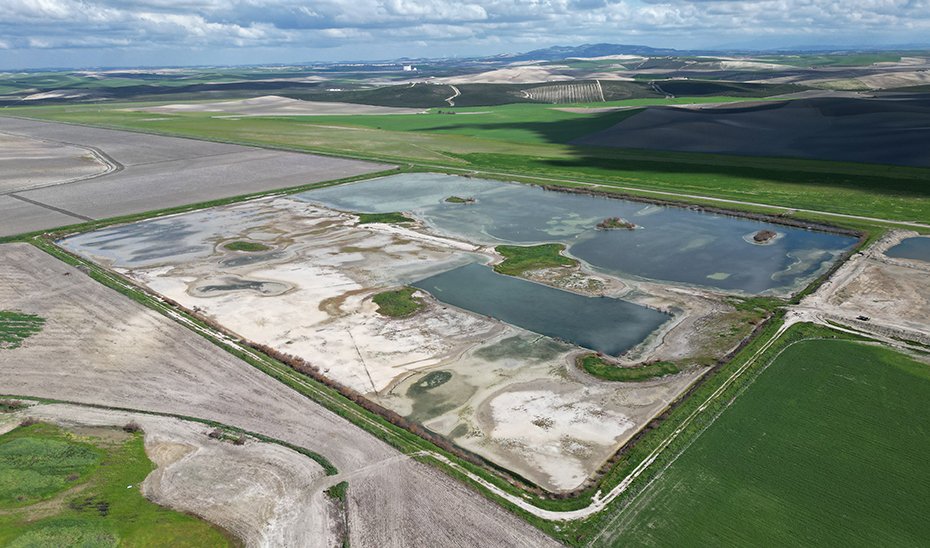The Department of Sustainability and Environment of the Andalusian Government has formalized the inclusion of the wetland known as Haza de la Torre in the Inventory of Wetlands of Andalusia (IHA), through a resolution of the General Directorate of Protected Natural Spaces published in the Official Gazette of the Andalusian Government (BOJA) on May 7, 2025. With this addition, Jerez de la Frontera now has six wetlands registered in this environmental catalog, which currently includes 229 sites with relevant natural values spread throughout the Andalusian territory.
«The inclusion of Haza de la Torre in the IHA represents a recognition of its current ecological value and a commitment to the future to ensure its conservation, highlight its environmental functions, and facilitate harmonious coexistence between natural processes and the rural environment surrounding it. With this step, the Andalusian Government reinforces its commitment to a more resilient, functional, and connected network of natural spaces,» stated José Enrique Borrallo, Director General of Protected Natural Spaces.
The recognition of Haza de la Torre was approved at the last session of the Andalusian Wetlands Committee held in November 2024, and since then, the necessary procedures have been initiated for its formalization as a unique space due to its ecological value. The wetland is located in the municipality of Jerez, in the vicinity of the rural neighborhood of Mesas de Asta, on land that in the past housed ponds used by the sugar industry for waste management. After its abandonment, and thanks to its location and characteristics, the site began a natural recovery process that transformed these former artificial lagoons into an ecosystem with a remarkable richness of fauna.
The renaturalization process began in 2009, with the implementation of various projects that improved the ecological conditions of the site. Part of the sediments accumulated over decades were removed, and the interior walls dividing the ponds were eliminated, while respecting the perimeter wall that currently contains the water mass. In addition, interior islands and hydraulic gates were created to allow controlled connection with the Tabajete and Obispo canals. Today, the water feeding the wetland comes exclusively from rain, although there is the possibility of providing additional contributions from these canals if necessary.
Historically, this site was part of the former estuary of the Guadalquivir River, and the oldest maps identify it with names like Laguna Grande, Laguna del Mortero, or Laguna de Mesas de Asta. More than a decade after the agreements signed between the Andalusian Government and the company owning the land for its restoration, Haza de la Torre has established itself as a top-tier refuge for the avifauna of southwestern Andalusia.
During the winter seasons, more than 5,000 birds of thirty different species have been counted. Among them are emblematic species such as the marbled teal, the osprey, or the common crane. But what truly sets this enclave apart is its key role in the conservation of the black-winged stilt, a threatened species for which Haza de la Torre has become one of the most important areas in the entire Mediterranean basin. Significant populations of avocets and slender-billed gulls have also been detected in the wetland.
Currently, the site hosts the largest breeding bird community in the province of Cadiz, second only to the Natural Park Bay of Cadiz. The uniqueness of this fact lies in the small size of the wetland, at just 39.4 hectares, compared to the over 10,000 hectares occupied by the Bay’s natural area. This data highlights the exceptional value of the wetland and the success of the environmental recovery efforts carried out in recent years.
With the aim of continuing to improve the ecological status of the wetland, the Department of Sustainability and Environment has planned a new restoration project funded by European funds from the NextGenerationEU program, within the framework of the Recovery, Transformation, and Resilience Plan. This initiative will be developed in collaboration with the private ownership of the land, through a specific agreement.
Among the planned actions, improvements in the water storage capacity of the wetland basin will be considered through the removal of new sediments, the creation of a perimeter fence to facilitate water retention and prevent the entry of predators, and the adaptation of existing islands to promote the nesting of waterfowl. Additionally, access to the site will be improved by adapting the path and installing a wooden pergola that will allow discreet observation of the lagoon without interfering with the ecosystem. Finally, vegetation planting in the immediate surroundings will be carried out to stabilize the soil, prevent erosion, and avoid the arrival of sediment loads into the wetland.
Publication in BOJA:

